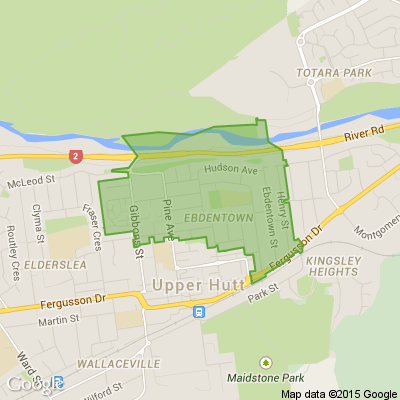Protecting your home from fires
1. Check your smoke alarms
Smoke alarms provide an early warning in case of a fire inside your home. Traditional alarms beep when they detect smoke or fire, while smart detectors also send an alert to your phone. There should be a smoke detector in every room in your house except bathrooms, for maximum protection. You also need one in the hallway between the living area and bedrooms.
Crucially, you are highly advised to test your smoke alarms at least once a year to ensure they still work. You are four times more likely to die in a house fire without a functioning smoke alarm!
2. Get a fire extinguisher
Having a fire extinguisher handy can make the difference between a small kitchen mishap that was successfully contained, and the house literally burning down. There are different types of fire extinguisher, classified according to the kind of fire they’re designed to tackle. Make sure you are aware of what the differences are and how to use each one in an emergency situation. A typical home extinguisher should have an ABC rating:
• Class A – combustibles such as wood, paper, cloth, rubber, household rubbish, most plastics
• Class B – flammable liquids, solvents, oil, petrol, paints and lacquers
• Class C – gases including methane, propane, hydrogen, acetylene and natural gas
• Class D – combustible metals including magnesium and aluminium swarf
• Class E – Electrical fires
• Class F – chip pan fires, as an alternative to a fire blanket
3. Create a fire stopping landscape
A fire originating from outside, such as a wildfire, is best thwarted by preventing it from reaching your house in the first place. You can use landscape gardening design to slow down or stop the spread of fire towards your home, by adhering to these tips:
• Use hard landscaping such as concrete, stone or gravel around the house
• Clear any dry vegetation from around the home, particularly in the summer
• Use fire resistant plants such as lavender and honeysuckle for soft landscaping, and spread them out, to slow down fire and stop it from spreading
• Keep outdoor plants well watered during the summer months. Lush green planting is less likely to burn.
4. Use fire retardant materials
Let’s start with building materials; some are more vulnerable to fire than others. Using fire retardant alternatives and fireproofing your interiors are good first lines of defence against a potentially serious tragedy. Make the changes when you are refurbishing or redecorating your home. The Building.govt.nz website has a comprehensive list of everything you can do to help prevention of fire occurring. Designing for fire can also be designing for sustainability which is without a doubt a win-win!
When it comes to materials, concrete panels, stucco or brick for exterior walls, steel framing for windows and concrete or metal for roofing are all good choices. Fire retardant paint is also a good idea. For decking, concrete, tiles, stone or brick are better than wood.
Inside your home, choose fire resistant curtains and upholstery fabrics. Additional flameproofing can also be administered to your existing home fabrics and upholstered furniture in situ. Curtain Clean can service your existing upholstery anywhere in the country. Call us on 0800 579 0501 for prices and to find out more.

Say goodbye to tyre waste
About 40% of the 6.5 million tyres Kiwis use every year are recycled, repurposed, or used as tyre-derived fuel. But the rest end up in landfills, stockpiled or dumped.
The good news is now there’s an easy solution to all that tyre waste. It’s called Tyrewise and is New Zealand’s first national tyre recycling scheme.
Tyrewise ensures that tyres in Aotearoa New Zealand are recycled or repurposed properly, saving millions from going to the landfill.
Find out more about the scheme online.

Anzac Day
There are opportunities across the motu for the public to come together to mark Anzac Day this year.
National Anzac Day events include the Dawn Service at 6.00am and the National Commemorative Service at 11.00am (both at Pukeahu National War Memorial Park, Wellington), and the Atatürk Memorial Service at 2.30pm in Strathmore, Wellington. The Dawn Service and National Commemorative Service will be broadcast live by TVNZ 1 and RNZ National.
For those wanting to join the Anzac Day parade at the Dawn Service, veterans are asked to assemble on Tasman Street by 5.30am.
The Atatürk Memorial Service in Strathmore will include a wreath-laying ceremony. A shuttle service will be running from Bowes Crescent carpark to the memorial site for anyone who may require assistance accessing the site.
For more information about Anzac Day, visit the Manatū Taonga Ministry for Culture and Heritage website or see the Pukeahu National War Memorial Park Facebook page.
To find out about events in your local community, visit the Royal New Zealand Returned and Services’ Association’s website or get in touch with your local council.

FAMILY OF POTHOLES
Not the biggest pothole in NZ but Alexander Road in Trentham has one of its round-abouts with a family of potholes on the roading making it difficult to avoid them.
The Upper Hutt City Council was quick and ridiculous to reduce the speed limit of all Alexander Road from 80kg to 50kg but not so quick to repair this multiple of potholes.
I must not hold my breath because nearly 4 years ago I held a discussion with the UHCC roading chief on the appalling state of the busy Ward Street road in Wallaceville and he agreed but asked me which would you prefer - fixing up Fergusson Drive or Ward Street as a priority. Well nothing has been done either to Fergusson Drive.
I am hoping the new Government with its plans to reverse some speed restrictions and introduce reducing speed restrictions on some roads, will prompt the UHCC to wake up their ideas of Alexander Road which in most part is non urban residential housing.







 Loading…
Loading…